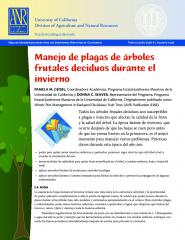Bloom Color: Pink, White. Main Bloom Time: Early spring, Late spring, Mid spring. Form: Rounded, Vase.
Prunus cerasifera is a deciduous Tree growing to 9 m by 9 m at a medium rate.
It is hardy to zone 4. It is in flower in March, and the seeds ripen from August to September. The species is hermaphrodite and is pollinated by Bees.
Suitable for: light , medium and heavy soils, prefers well-drained soil and can grow in heavy clay soil. Suitable pH: acid, neutral and basic soils. It can grow in semi-shade or no shade. It prefers moist soil. The plant can tolerates strong winds but not maritime exposure.
Landscape Uses:Specimen. Requires a well-drained moisture retentive soil. Succeeds in light shade but fruits better in a sunny position. Thrives in a loamy soil, doing well on limestone. Grows well in heavy clay soils. Prefers some chalk in the soil but apt to become chlorotic if too much is present. A very ornamental plant, it is sometimes cultivated for its edible fruit, unfortunately this is not often borne in large quantities in Britain, but large crops are produced every 4 years or so. There are some named varieties. Included as a part of P. divaricata by some botanists though others include P. divaricata as a sub-species under this species. Most members of this genus are shallow-rooted and will produce suckers if the roots are damaged. Plants in this genus are notably susceptible to honey fungus. Special Features:Attractive foliage, Not North American native, All or parts of this plant are poisonous, Blooms are very showy. The plant is heat tolerant in zones 9 through 1. .
At this temperature, many plants begin to suffer physiological damage. Heat Zones range from 1 to 12 .
For example Heat Zone. 11-1 indicates that the plant is heat tolerant in zones 11 through 1.) For polyculture design as well as the above-ground architecture information on the habit and root pattern is also useful and given here if available. A sprouting standard sending up shoots from the base .
HabitatsWoodland Garden Secondary
HabitatsSunny Edge
HabitatsDappled Shade
HabitatsHedge
HabitatsWoodland Garden Secondary
HabitatsSunny Edge
HabitatsDappled Shade
HabitatsHedge
Resources
8368s

Hoja de recomendaciones para los Jardineros Maestros de California Publicación 8368-S / Agosto 2008
University of California
https://anrcatalog.ucanr.edu/pdf/8368s.pdf8368s
Division of Agriculture and Natural Resources8368s
Hoja de recomendaciones para los Jardineros Maestros de California Publicación 8368-S / Agosto 2008
University of California, Agriculture and natural resources
University of California
Division of Agriculture and Natural Resources
